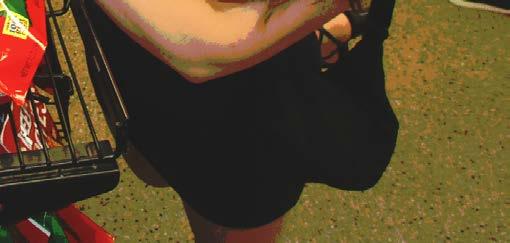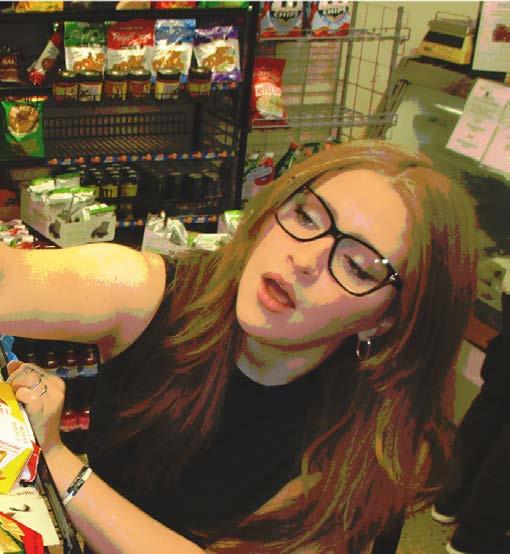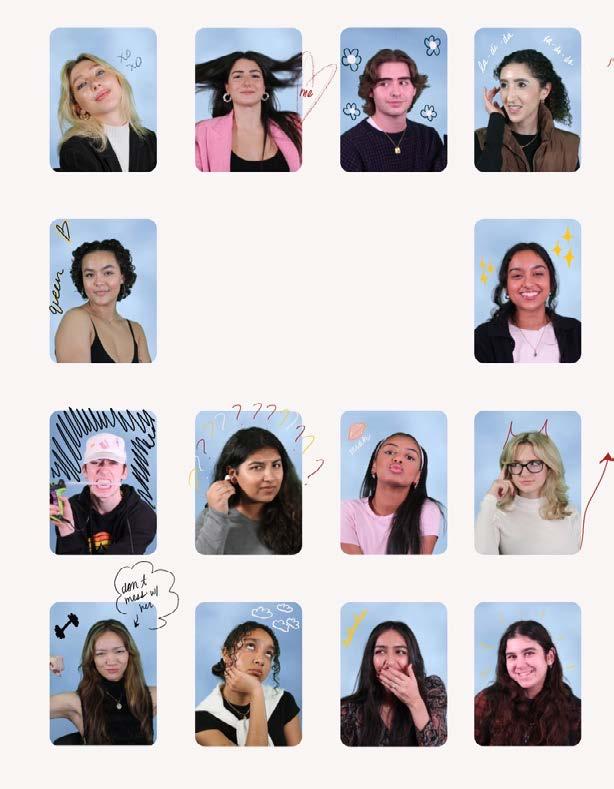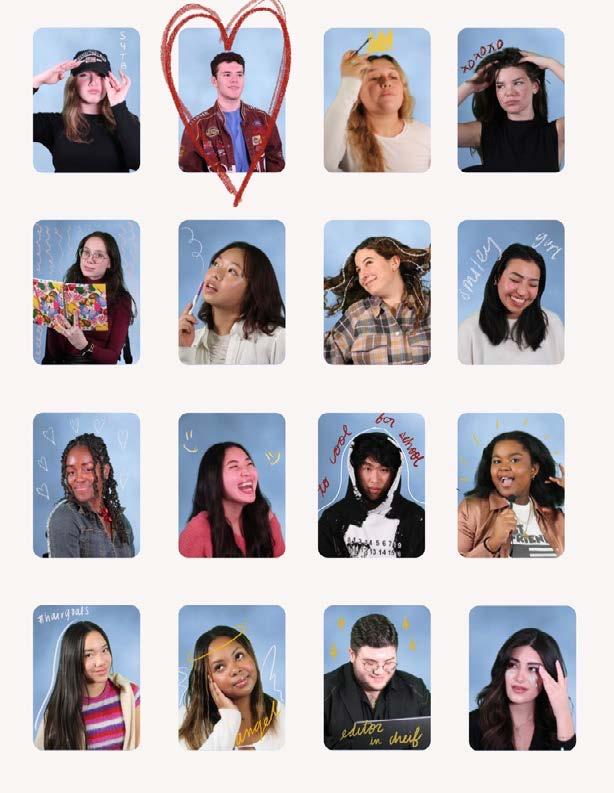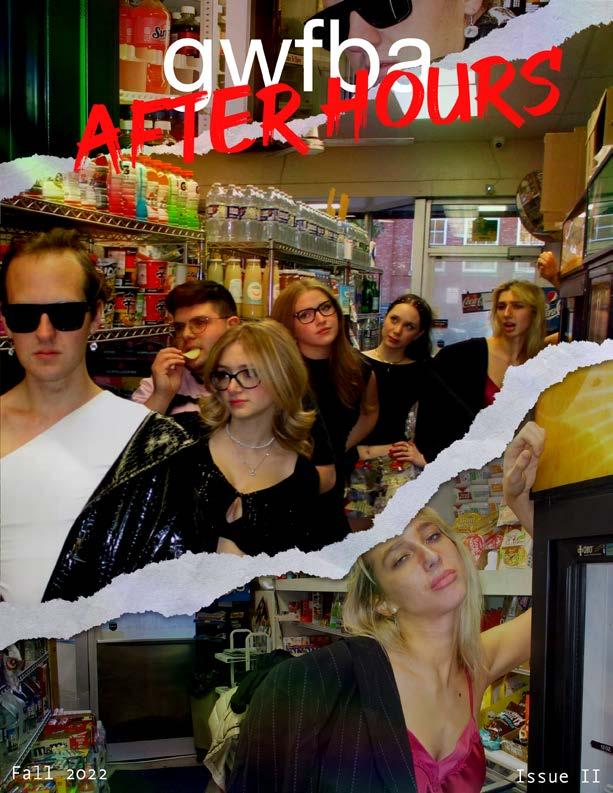
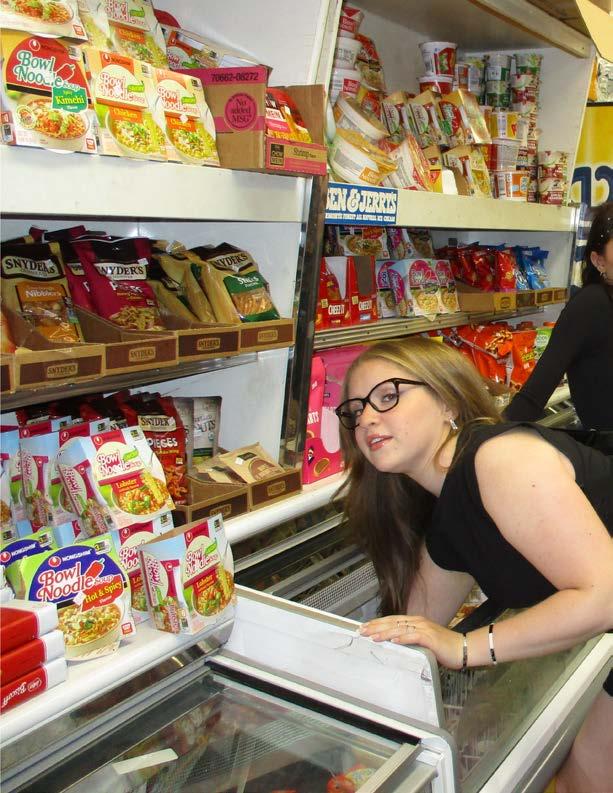
































6 The Resurrec tion of the UGG 10 St ylist Spotlight: L aw Roach 14 Streetw ear x High Fashion: Complementray or Contradic ting 18Masculin Féminin & How Film Influences Fashion 24 How Fast Fashion is Greenwashing Their Resell Platforms 28 Class of ‘2 3 Yearbook
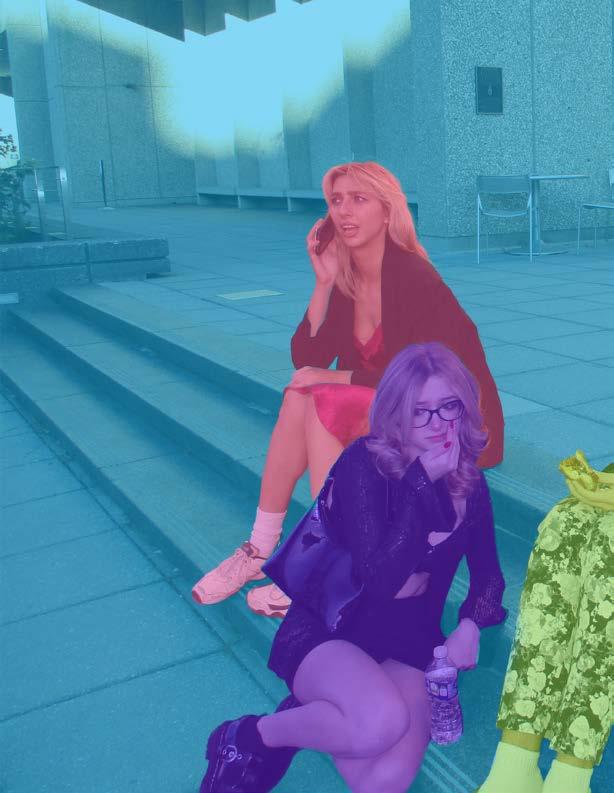
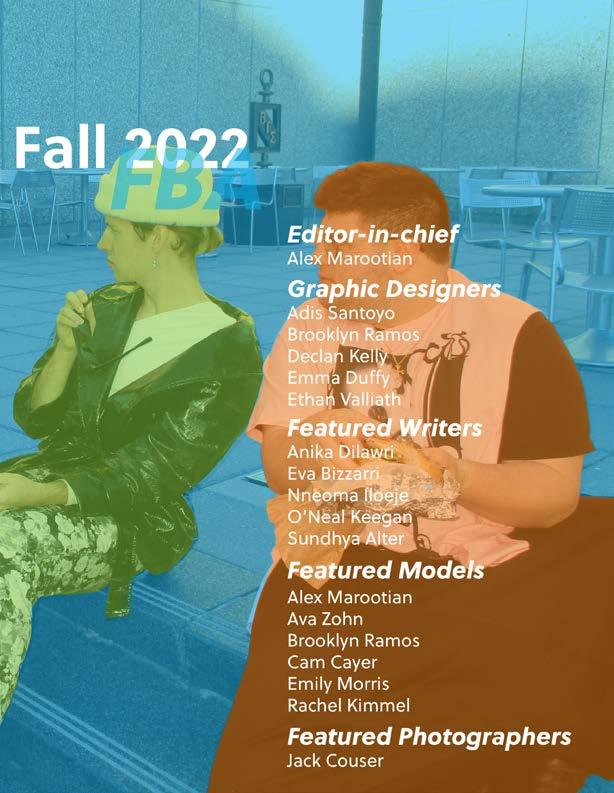
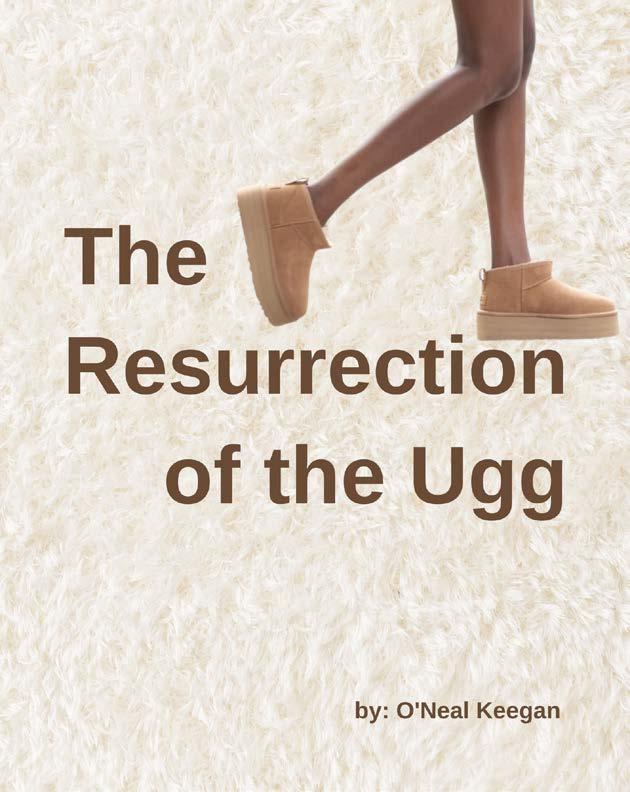
Uggs are one of the most heavily debated shoes on the market right now. While the Classic Ultra Mini boot has been brought back into style, the hate for the classic UGG can not be forgotten. But how has the 2010 brand come back to life?
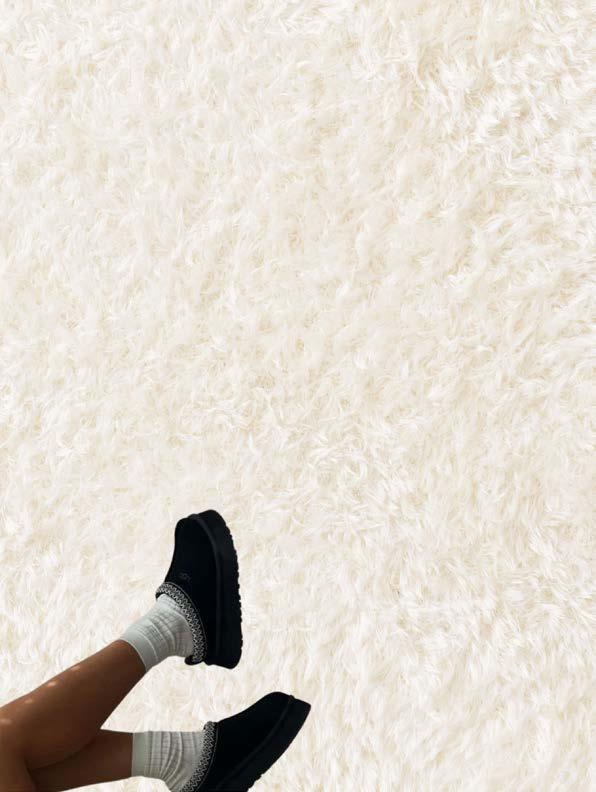
Like crop tops and low rise jeans, the 2000s are coming back in full storm. The rise of the “Ultra Mini” style can be attributed to famous supermodel, Gigi Hadid. As a pivotal figure of the “model off duty” aesthetic, her endorsement of UGG has seen the shoe skyrocket in popularity. But, the typical UGG boot is not the one being brought back. The “Ultra Mini” has become so sought after that TikTokkers are cutting their own UGGs to emulate the new style of boot. The resurrection of the low top style is not only an aesthetic choice, but is also a result of the athleisure style that has become commonplace since 2010.
It became increasingly prominent at the start of the COVID pandemic in 2020 and only continued when people left their homes to return to the workforce. After living in our pajamas for a year, the athleisure style has spilled over into the office place and fashion world. The rise of the model off duty and the “clean girl” aesthetic occurred as a result of the world missing their days spent in their sweatpants. The clean girl aesthetic emphasizes effortless beauty, encapsulated by the “no makeup” makeup look and polished but simple clothing. It has risen on the social media platform Tik Tok since early 2022.
The resurgence of UGGs only further shows this. A warm and comfy shoe I can wear to class, the grocery store, over to a friends’ house? Sign me up. I wore UGGs around my house and to run errands even when they were practically banned from the fashion world circa 2010. I’m glad to see them back and with even more styles to choose from. UGGs are especially trendy on the GW campus and there has been a rise of the Ultra Mini style. Looking into the future, UGGs will only get more desirable as winter comes and people look for warm and comfortable footwear options.
The brand of UGG is also looking into the future, emphasizing responsibility to people and the planet on their homepage. The Australian shoe company is praised for their “responsibly-made products featuring materials that are authentic, high quality, comfortable, and durable. This includes ethically-sourced sheepskin, leathers, suede, wool, down, cotton, and hemp”. They have made it a goal to reduce greenhouse gasses with each pair of footwear by 40% per pair and lower energy usage by 25% per pair by 2023. The brand has also committed to the Apparel Transparency Pledge, which means they post information on all of their Tier-1 suppliers to ensure ethical working conditions for workers.
UGG is also partnered with the HERProject to provide training to women on the supply chain to ensure equal gender representation in the workplace and increase jobs for women. HERProject “is a collaborative initiative that strives to empower low-income women working in global supply chains” by creating healthier and safer working environments. Over the last decade, the organization has reached over 500,000 women in 420 workplaces across 14 countries with its core programs. It has expanded from supply chain education to also awareness about healthy eating, personal hygiene, financial planning, and the roots of violence in the workplace.The brand has clearly shown that it wants to be more socially responsible through environmental and quality initiatives.
Overall, UGG is a brand that is rising in popularity as it adapts its classic styles to a new generation of UGG wearers. I can’t wait to see what new styles the brand comes up with as they make a resurgence in the fashion world.


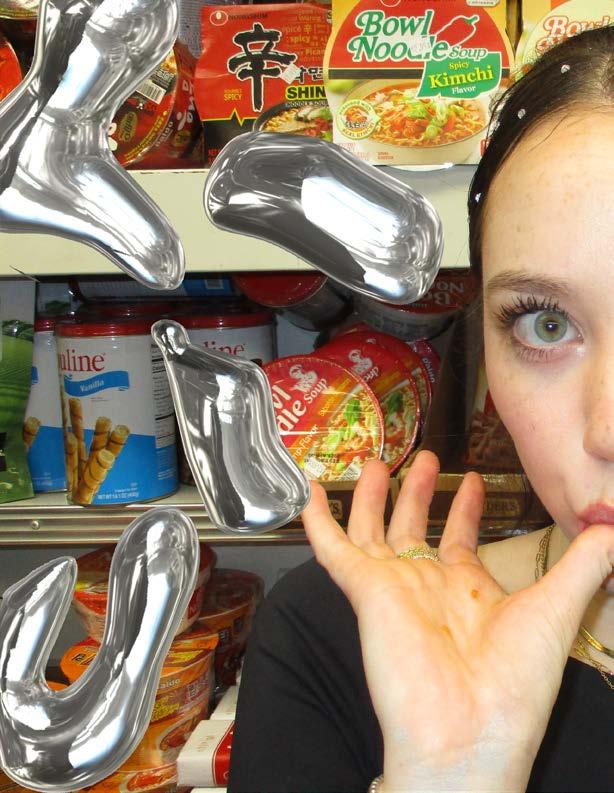
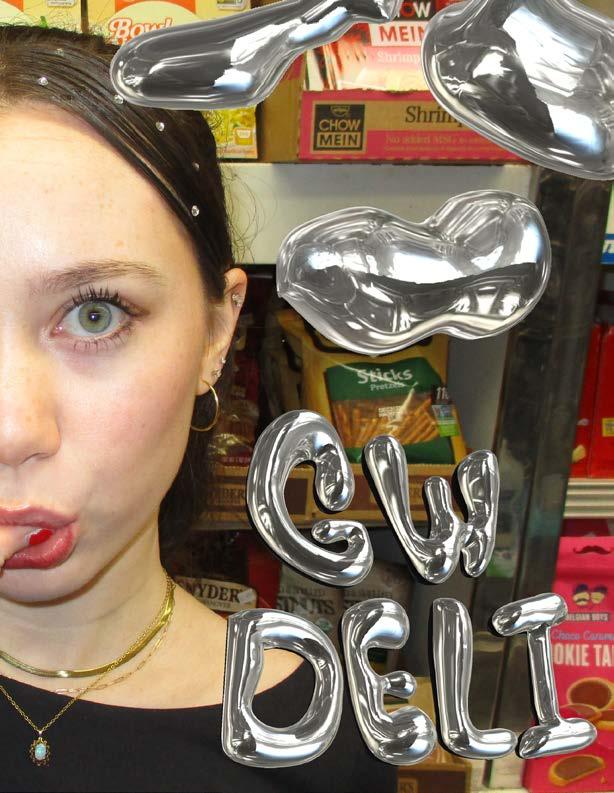
L aw Ro
Law Roach.
The man, the myth, the legend. Popularly known as Luxury Law on his social media handles, the stylist to the stars recently made fashion history at the recent Council of Fashion Designers of America (CFDA) Awards.
On Monday night, Roach received the “Stylist of the Year” Award, making him the first ever recipient of the brand new award, and setting the bar extremely high for any other stylists who will fol low him. As the first recipient and the first black recipient, Roach has effectively cemented himself in fashion history as a tour de force. A name to be known, heard, listened to, and remem bered.
If you are not familiar with his name, there is no doubt that you are familiar with his work. Frequently credited with Celine Dion’s extravagant fashion transformation, Roach has worked alongside his longtime client and close friend Zendaya, as well as TikTok star Addison Rae, actress Anya Taylor Joy, supermodel Bella Hadid, and many more notable names in the entertainment industry.
Although it may seem hard to believe, Roach, who now boasts numerous accolades and upwards of 1.2 million followers across his social media accounts, did not al ways have a stylist career in mind. His fashion career be gan in his hometown of Chicago, with him selling clothing items second-hand to his friends. This hobby then de veloped into him opening his own vintage clothing store appropriately named: Deliciously Vintage. When Kanye West made a chance visit to the store in 2009, it drew the attention of paparazzi and fashion insiders from around the world. This was Roach’s first experience in the world of styling.

“We started receiving all these calls from stylists and it was all around the world,” Roach said in an interview with CNN. “I was just so impressed that so many people had this job.”
With this newfound success, Roach moved to Los Angeles where he was introduced to a then 14-year old Zendaya, making her his first major client. The pair took Hollywood by storm. Their creative partnership and close friendship led to major success both on and off the red carpet, in person and on social media, making Zendaya and Roach a style duo to be feared and respected.
Zendaya herself became the youngest recipient to receive the Style Icon award at the CFDA Awards in 2021. As Roach is the only stylist that she has ever worked with, it’s truly a testament to their hard work and sets an example for what a client and stylist relationship should look like. Together they have delivered countless looks, some fresh off the runway (like Zendaya’s Loewe Spring Summer 22 look that she donned for the 2021 Women in Film Awards just six days after it debuted on the runway), and some archival (like the 1998 Bob Mackie dress that she wore to the 2022 “Time” 100 Gala). With Roach’s incredible pull and immaculate taste, it’s no surprise that Zendaya has become the fashion icon that she is today.
Roach is especially loved because, even though it is easy for stylists to hide behind their work, he has become a celebrity in his own right. In 2016, Roach made his television debut as a judge for cycle 23 of America’s Next Top Model, alongside fellow celebrity judges Ashley Graham, Drew Elliot, and Rita Ora. He then went on to become the first African American stylist to grace the cover of the annual The Hollywood Reporter’s Stylist & Stars Issue, where he was joined by Zendaya and Celine Dion. Further adding to his ever growing celebrity status, in 2019, Roach had the coveted opportunity to attend the Met Gala not only as a stylist, but as a guest. Currently Roach is serving as a judge for the HBO Max show “Legendary”.

The self dubbed “image architect”, Roach has quickly become one of Hollywood’s most wanted stylists, and honestly, as expected. With his clients, it’s not simply just an act of dressing them.
“I think that what separates me from other [stylists] is that I really work hard to find who the person is. I don’t want to ever change that; I just want to help elevate it; for them to be the best version of themselves.”
11
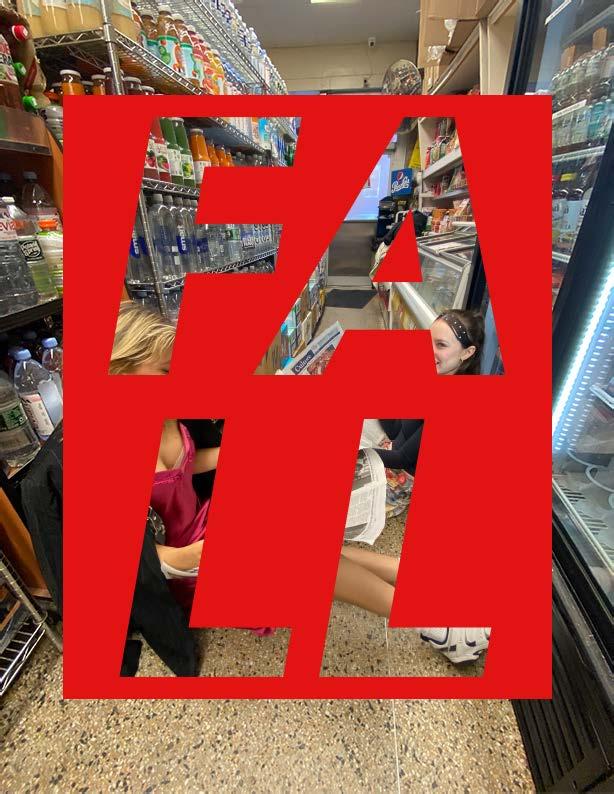
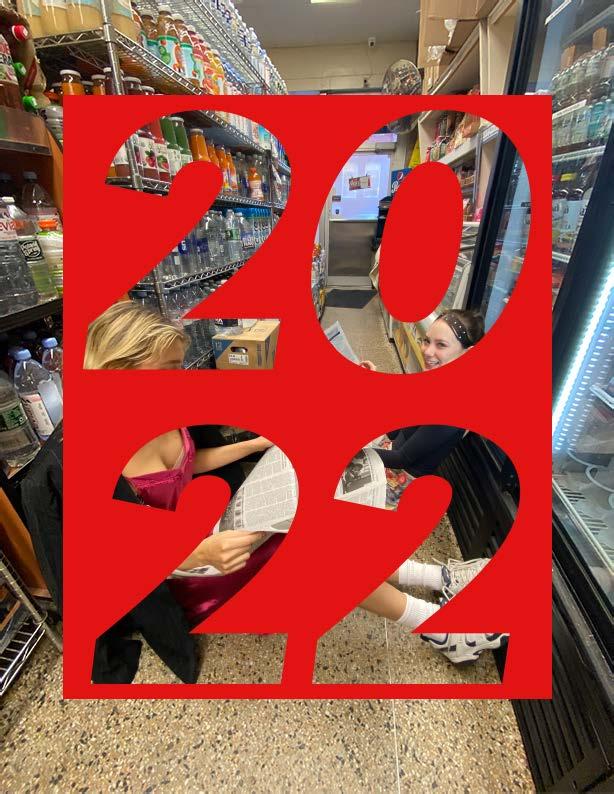
15
A n a d d i t i o n a l l a n d m a r k p a r t n e r s h i p r e l e a s e d t h e s a m e y e a r , w a s S u p r e m e x L o u i s V u i t t o n i n 2 0 1 7 . W i t h a l o o k b o o k c o n s i s t i n g o f e v e r y t h i n g f r o m h a t s a n d h o o d i e s t o t r u n k s a n d k e y c h a i n s , s t r e e t w e a r w a s a b l e t o t a k e o n n e w t e r r a i n t h r o u g h o b j e c t s a n d h o m e d e s i g n . T h e s e o b j e c t s a l s o a c t e d a s a p r e c u r s o r f o r t h e I K E A x O f f W h i t e c o l l a b o f 2 0 1 9 . T h e o v e r l a p o f s t r e e t w e a r a n d h o m e d e s i g n i s a t e s t a m e n t t o t h e u b i q u i t o u s n a t u r e o f s t r e e t w e a r . A b l e t o m o v e a n d f u s e w i t h a n y a e s t h e t i c o r p r o d u c t , s t r e e t w e a r e n c o u r a g e d i t s o w n s o u g h t - a f t e r n o t o r i e t y . W i t h t w o o f t h e m o s t r e c o g n i z a b l e l o g o s i n t h e i n d u s t r y , i t e n c o u r a g e d t h e b l u r r i n g o f l i n e s b e t w e e n s t r e e t w e a r a n d h i g h f a s h i o n t h a t w o u l d c o n t i n u e t o p o i s e s t r e e t w e a r a s a n e l u s i v e s t y l e w i t h v a l u e d s o c i a l t a g s .
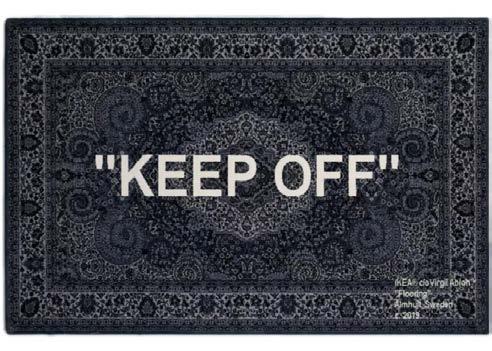
T h e s u c c e s s o f t h e S u p r e m e x L o u i s V u i t t o n c o l l ec t i o n w a s s e e n a s a m o m e n t i n w h i c h y e t a n o t h e r s t r e e t w e a r b r a n d f o r m a l l y t o o k o n t h e s t a n d a r d o f a l u x u r y l a b e l . F o l l o w i n g t h e t r e n d , P a l a c e x G u c c i m o s t r e c e n t l y r e l e a s e d i t s c o l l e c t i o n i n O c t o b e r o f 2 0 2 2 . I n p a r t n e r i n g w i t h P a l a c e , o n e o f t h e m o s t p o p u l a r s k a t e b r a n d s , G u c c i s o l i d i f i e d i t s a p p e a l t o a m o r e c o n t e m p o r a r y , d e m o c r a t i z e d g r o u p o f c o n s u m e r s . I n t e r a c t i n g w i t h a s k a t e b o a r d b r a n d a l l o w e d G u cc i t o a c q u i r e t h e e d g e i n i t s c o l l e c t i o n t h a t d i v e r s i f i e d i t s c r e a t i v e d i r e c t i o n . T h e c o l l e c t i o n c o n s i s t e d o f p i e c e s f r o m g r a p h i c t e e s , m o t o r c y c l e j a c k e t s , s o c c e r j e r s e y s , a n d e v e n a G u c c i P a l a c e - a d o r n e d m o t o r c y c l e .
W h i l e s e e m i n g l y p a r a d o x i c a l a e s t h e t i c s , t h e w o r l d s o f P a l a c e a n d G u c c i s e e m e d t o m e s h s e a m l e s s l y . T h e p o p u l a r i t y o f t h e c o l l a b o r a t i o n s s p e a k s t o t h e n a t u r a l r e l a t i o n s h i p b e t w e e n s t r e e t w e a r a n d h i g h f a s h i o n . A s m o r e a n d m o r e c o l l a b o r a t i o n s a r e d e s i g n e d , i t a p p e a r s t h a t r a t h e r t h a n l o s i n g i t s c u l t u r a l o r i g i n s , s t r e e t w e a r h a s m o r p h e d i n t o t h e l u x u r y a p p e a l i t h a s a l w a y s d e s i r e d t o b e . H o w e v e r , s t r e e t w e a r i s n o t t h e o n l y s t y l e a d j u s t i n g . I n r e c e n t y e a r s w e h a v e o b s e r v e d G u c c i a n d o t h e r l u x u r y b r a n d s i n t e r s e c t w i t h s t r e e t w e a r b y r e l e a s i n g l o g o t - s h i r t s , t r a c k s u i t s , a n d c h u n k y s n e a k e r s . I f b o th s t y l e s e v o l v e t o c o m p l e m e n t o n e a n o t h e r , d r a w i n g l i n e s b e t w e e n t h e t w o b e c o m e s l e s s a n d l e s s r e l e v a n t . T h e a m b i g u i t y t h a t r e s u l t s i s t h e r e v e a l i n g o f w h a t h a s a l w a y s b e e n a h y b r i d c o n s u m e r c u l t u r e , o n e t h a t c a r e s n o t a b o u t t h e s i g n i f i c a n c e o f t h e c l o t h i n g b u t t h e b r a n d i n g a n d a p p e a l o f i t s s o c i a l v a l u e .
.

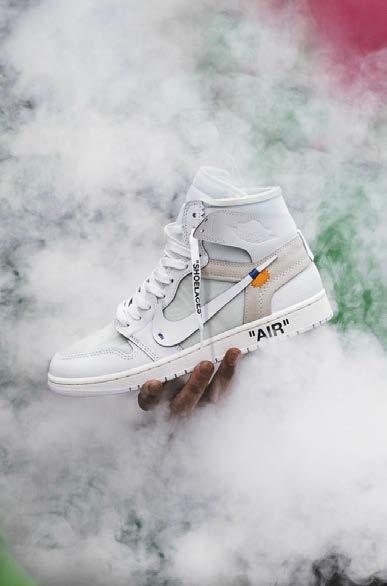

FAST FASHION RESALE PLATFORMS


 BY ANIKA DILAWRI
BY ANIKA DILAWRI
PRODUCTIVE OR PERFORMATIVE?
In February, fast fashion brand PrettyLittleThing announced the launch of their first in-house resale app, with the intention to “encourage sustainability” and “disrupt the fashion industry.” In August, Urban Outfitters announced their own version of an in-house resale platform. H&M, Shein, Zara, and countless other fast fashion brands eventually followed suit. Fast fashion brands are capitalizing on the exponential growth of the secondhand market with their newest venture: online resale platforms. Fashion resale can be an effective way to achieve more circularity in the industry, but are Zara and Shein’s resale platforms a sincere effort to reduce waste or simply a greenwashing scheme?

The secondhand market has skyrocketed with the emergence of resale platforms such as Depop, The RealReal, and Vestiaire Collective. Thanks to e-commerce, the global secondhand apparel market is projected to grow 3X faster than the global apparel market overall. According to ThredUp’s 2022 Resale Report, the American secondhand market is expected to more than double by 2026, reaching $82 billion. Plus, brands with their own in-house resale platforms increased 275% from 2020 to 2021. Consumers see the secondhand market as more inclusive and accessible, with 244 million consumers in 2021 reporting that they have or are open to Fashion industry and sustainability experts are skeptical of the motivation and effectiveness of fast fashions’ resale platforms. UK fast fashion giant PrettyLittleThing’s resale platform exchanges customers’ unwanted clothes for store credit and discounts. shopping second hand products.


When resale platforms offer store credit in return for fast fashion products without actionable degrowth commitments, neither consumption nor production are reduced–especially when fast fashion brands such as PLT release over 250 new products every week. These programs incentivize customers to increase their consumption by exchanging their pre-owned items for store credit. When evaluating the effectiveness of fast fashion’s resale platforms, it’s important to ask: does the brand tie their resale program back to genuine sustainability goals and transparently report on their progress?

Fast fashion garments’ poor quality also limits the effectiveness of these brands’ resale platforms. Resale platforms from companies such as Shein may stall garments from entering the landfill, but ultimately fast fashion’s cheap materials and low quality are not built to survive resale. Consumerism and the need for these brands to keep up with the latest trends may also limit the success of fast fashion resale programs. On an average day, Shein will add over 2,000 new items to its store. Consumers recognize this pressure to keep up with the latest trends as well, citing social media as a key source of this pressure.


Despite fast fashion’s meager efforts, fashion resale platforms are not all superficial, greenwashing schemes. Cuyana, a women’s accessory brand whose philosophy is “fewer, better”, released a resale program in April that allows customers to sell directly to purchasers for cash or Cuyana credit. Pre-loved items can also be donated to H.E.A.R.T., a charity Cuyana has long supported that helps women rebuild their lives after escaping domestic abuse. Cuyana’s resale program is supported by the brand’s commitments to produce as close to demand as possible, avoiding overproduction. Their website notes that they “sell through 90% of the products [made], which is high for the industry average sell-through rate of just 60-70%.” Resale, in theory, can contribute to a more circular industry while allowing business to still generate profits if it is matched with clear commitments from the brand to reduce environmental impact. However, fast fashion’s newest resale platforms lean more towards greenwashing than to circularity.


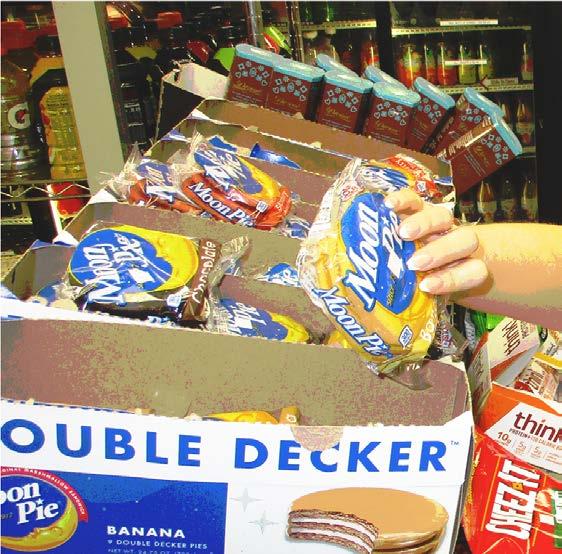
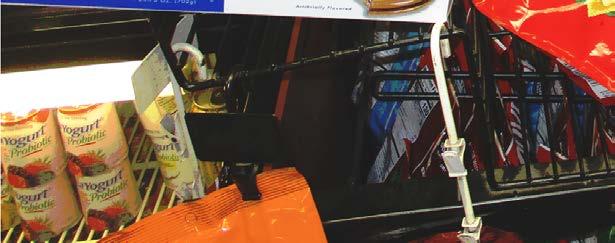















































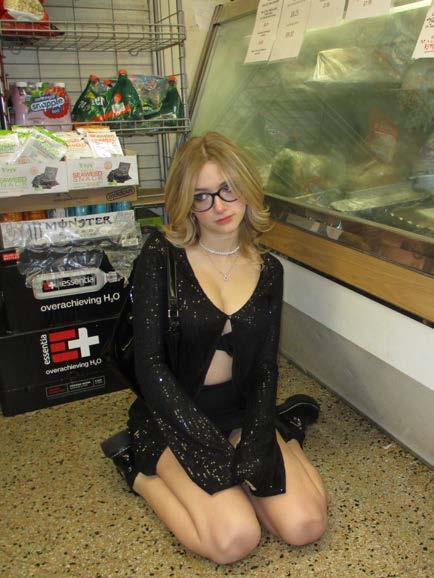
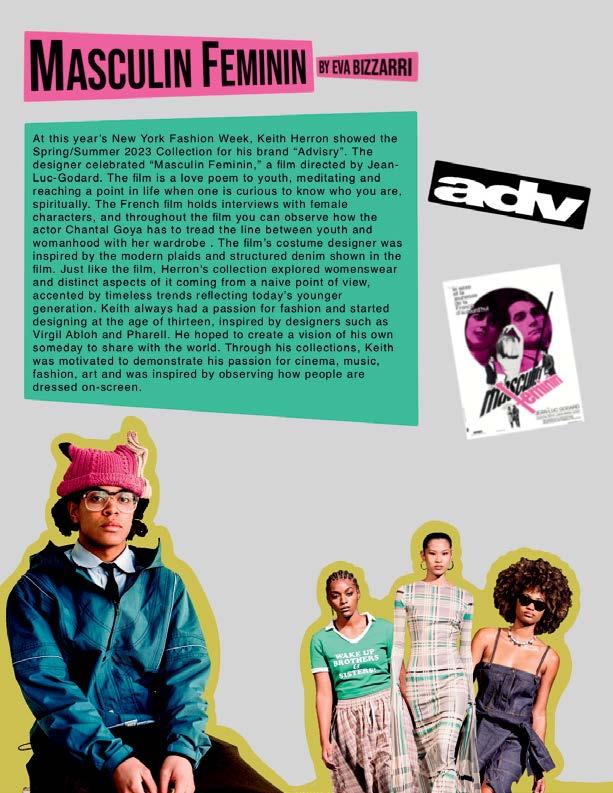
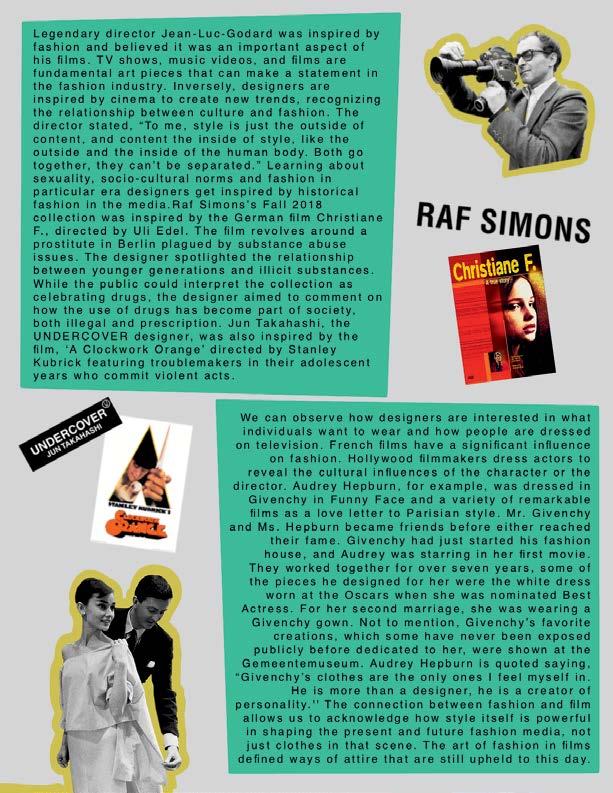
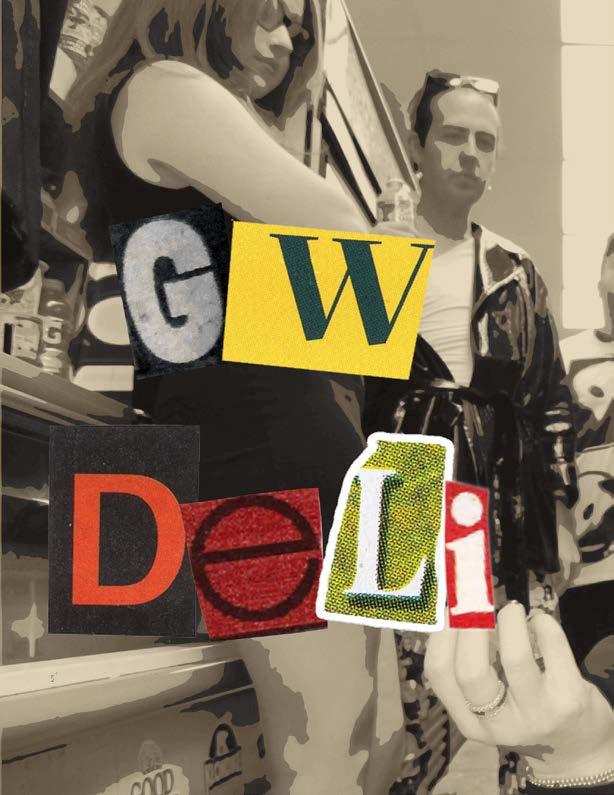
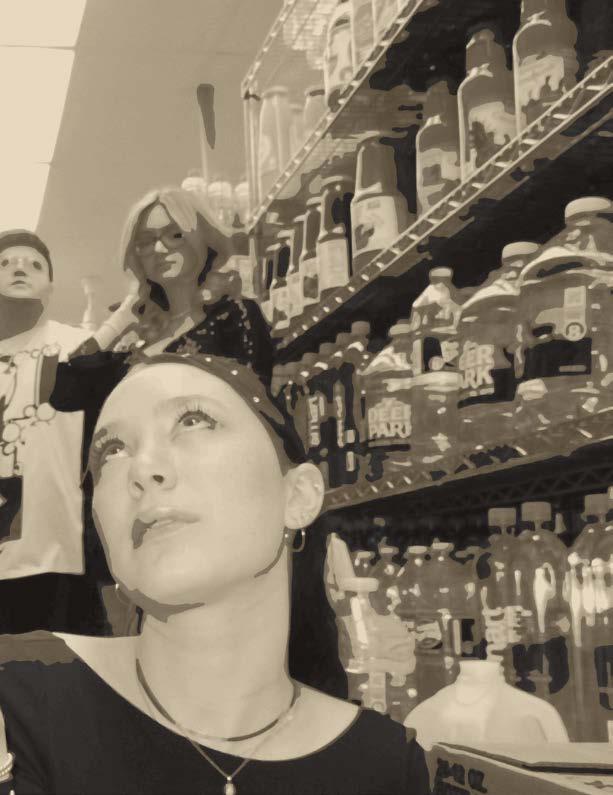


 BY ANIKA DILAWRI
BY ANIKA DILAWRI







